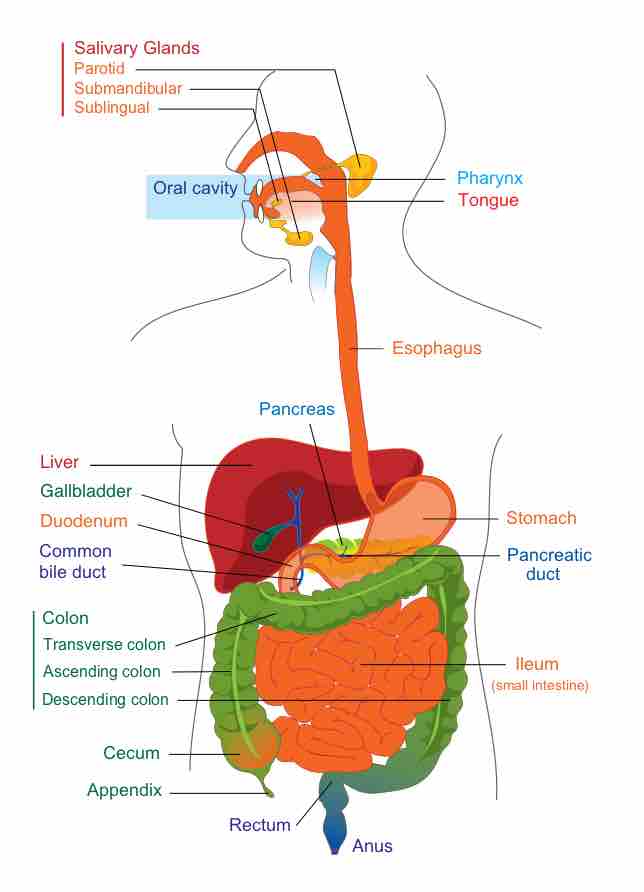The human gastrointestinal tract refers to the stomach and intestine, and sometimes to all the structures from the mouth to the anus.

Upper and lower gastrointestinal tract
The major organs of the human gastrointestinal system.
Upper Gastrointestinal Tract
The upper gastrointestinal tract consists of the esophagus, stomach, and duodenum. The exact demarcation between "upper" and "lower" can vary. Upon gross dissection, the duodenum may appear to be a unified organ, but it is often divided into two parts based upon function, arterial supply, or embryology.
The upper gastrointestinal tract includes:
- Esophagus: the fibromuscular tube through which food passes, aided by peristaltic contractions, from the pharynx to the stomach.
- Stomach: secretes protein-digesting enzymes called proteases and strong acids to aid in food digestion, before sending partially digested food to the small intestines.
- Duodenum: the first section of the small intestine and may be the principal site for iron absorption.
Lower Gastrointestinal Tract
The lower gastrointestinal tract includes most of the small intestine and all of the large intestine . According to some sources, it also includes the anus.

Small Intestine
This image shows the position of the small intestine in the gastrointestinal tract.
The small intestine has three parts:
- Duodenum: Here the digestive juices from the pancreas (digestive enzymes) and the gallbladder (bile) mix together. The digestive enzymes break down proteins and bile and emulsify fats into micelles. The duodenum contains Brunner's glands which produce bicarbonate, and pancreatic juice which contains bicarbonate to neutralize hydrochloric acid of the stomach.
- Jejunum: This is the midsection of the intestine, connecting the duodenum to the ileum. It contains the plicae circulares and villi to increase the surface area of that part of the GI Tract.
- Ileum: Has villi, where all soluble molecules are absorbed into the blood (capillaries and lacteals).
The large intestine has four parts:
- Cecum: The vermiform appendix is attached to the cecum.
- Colon: Includes the ascending colon, transverse colon, descending colon, and sigmoid flexure. The main function of the colon is to absorb water, but it also contains bacteria that produce beneficial vitamins like vitamin K.
- Rectum
- Anus
The ligament of Treitz is sometimes used to divide the upper and lower GI tracts.